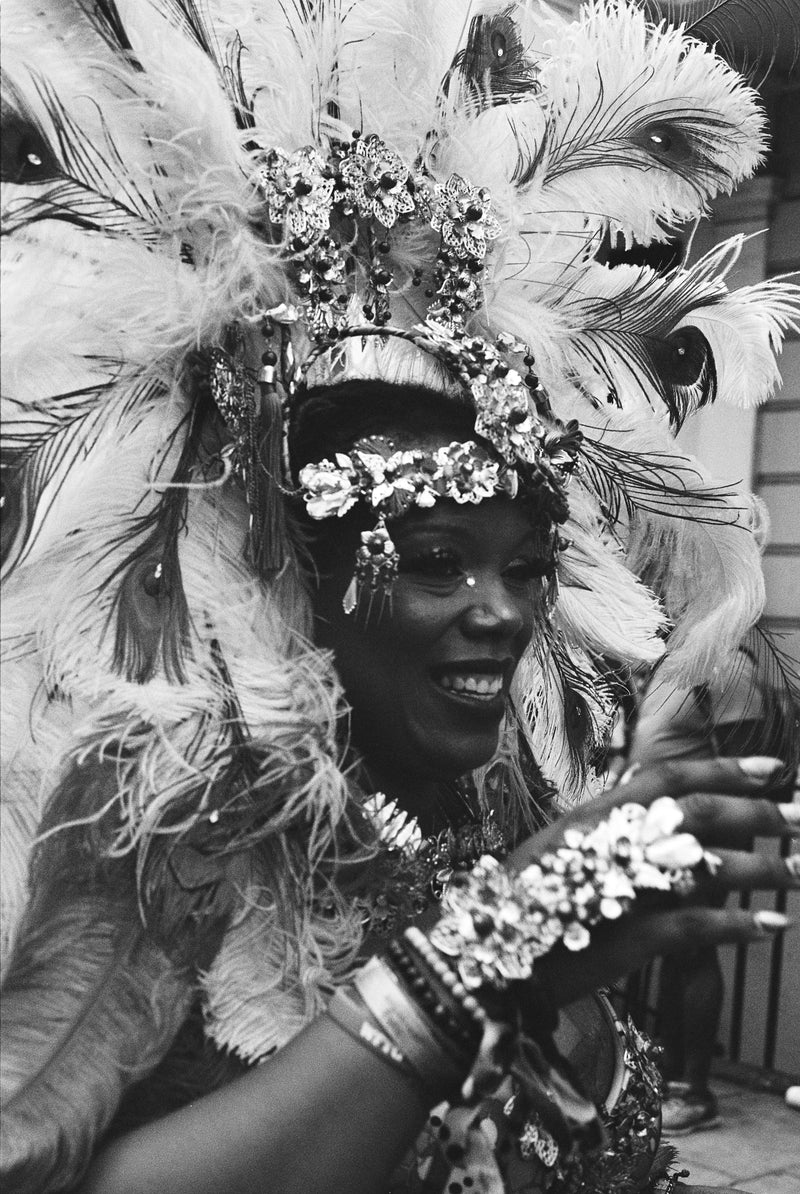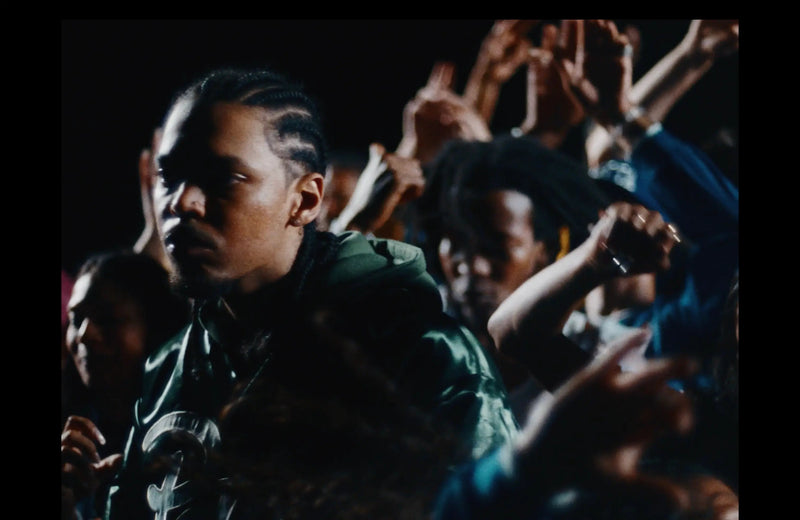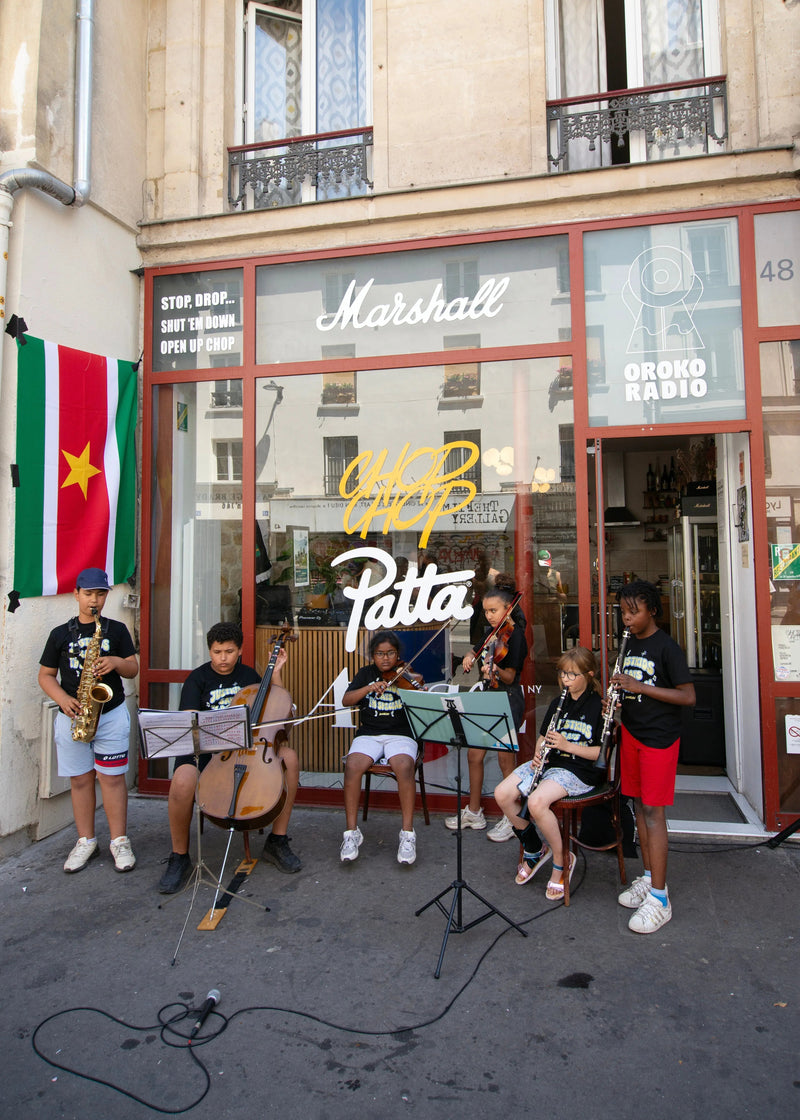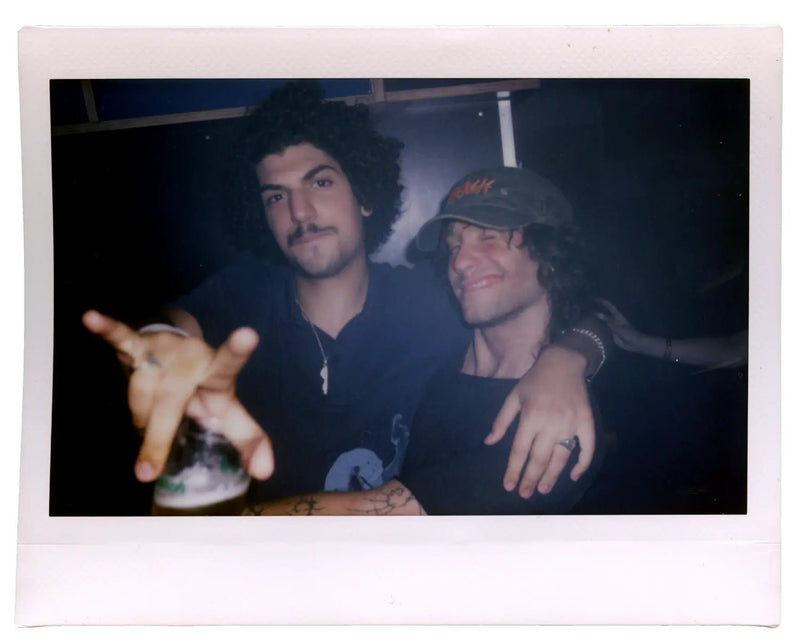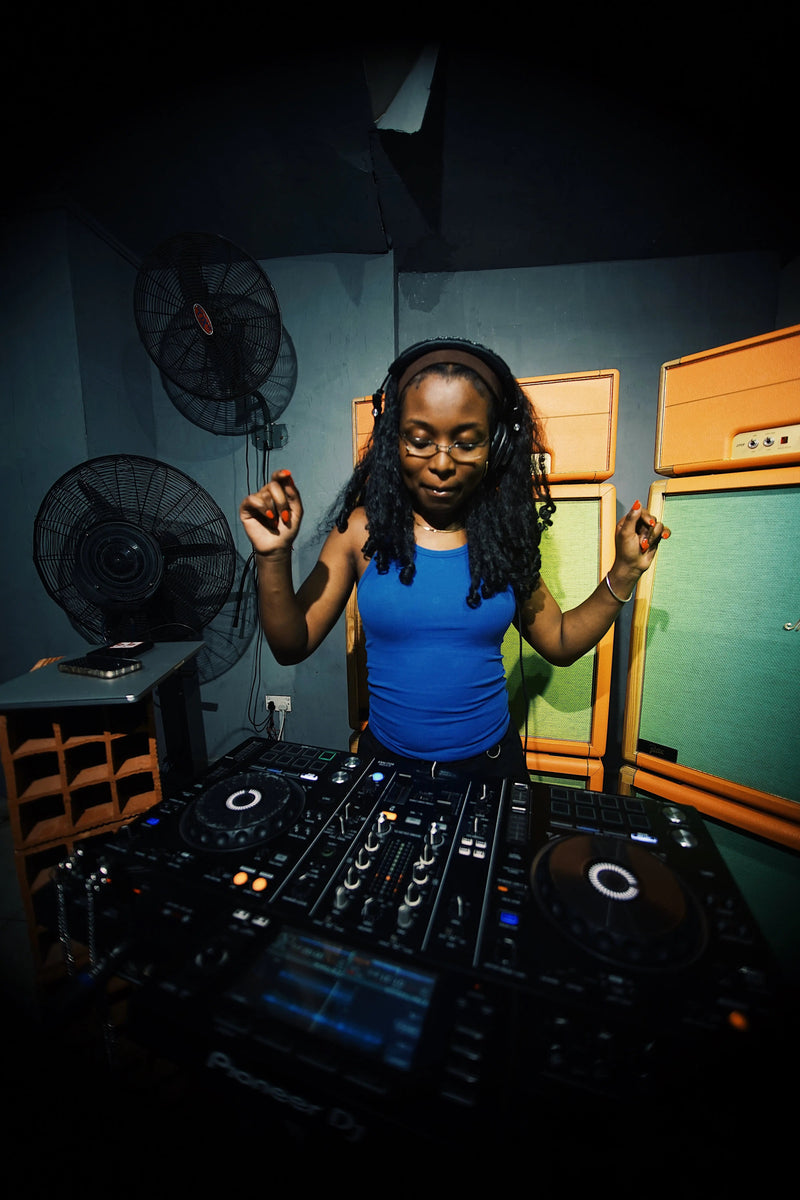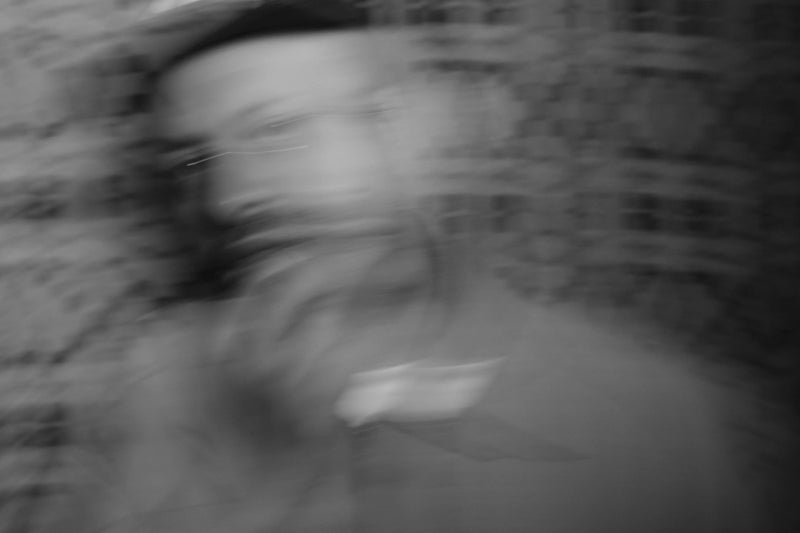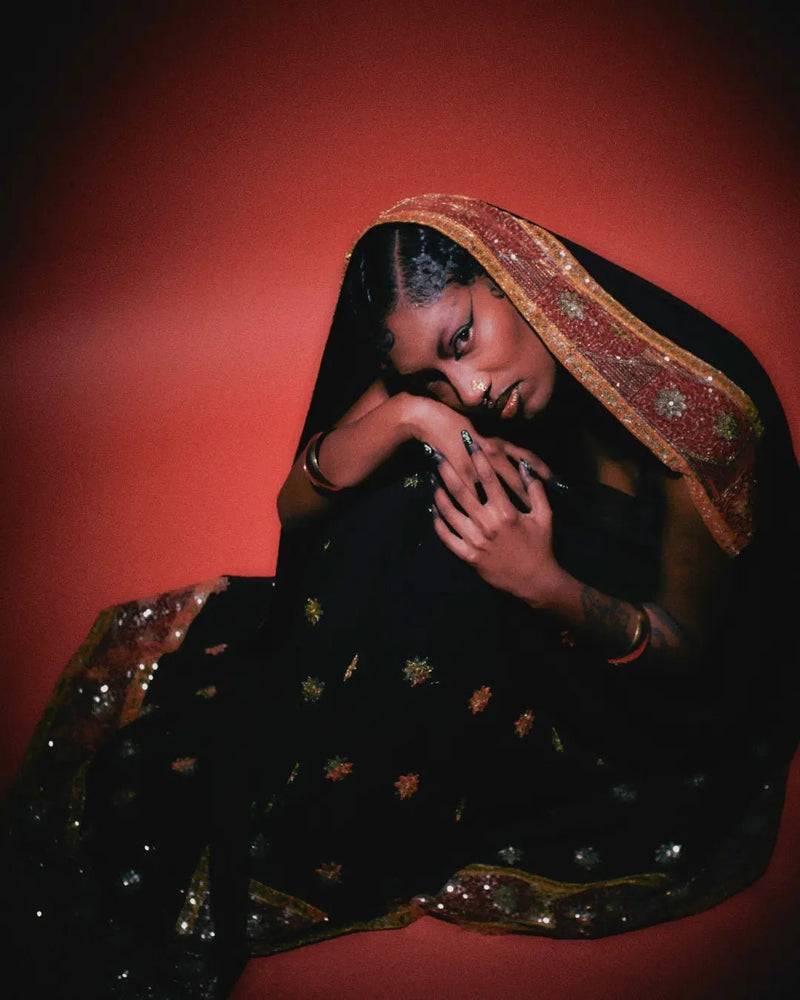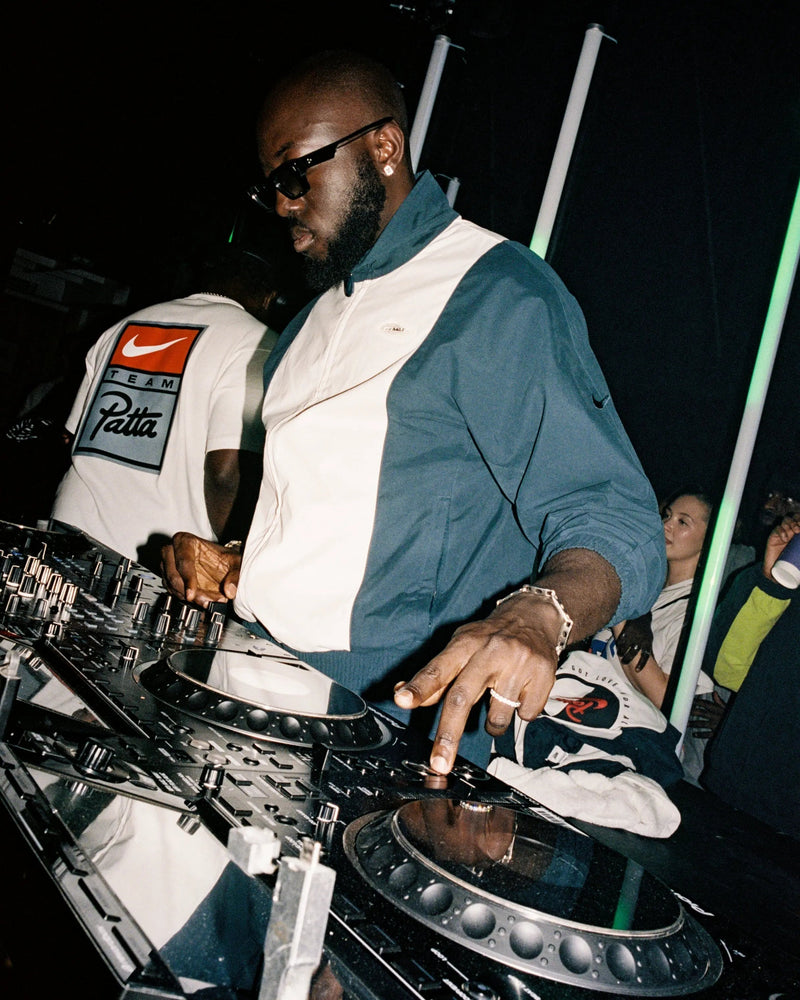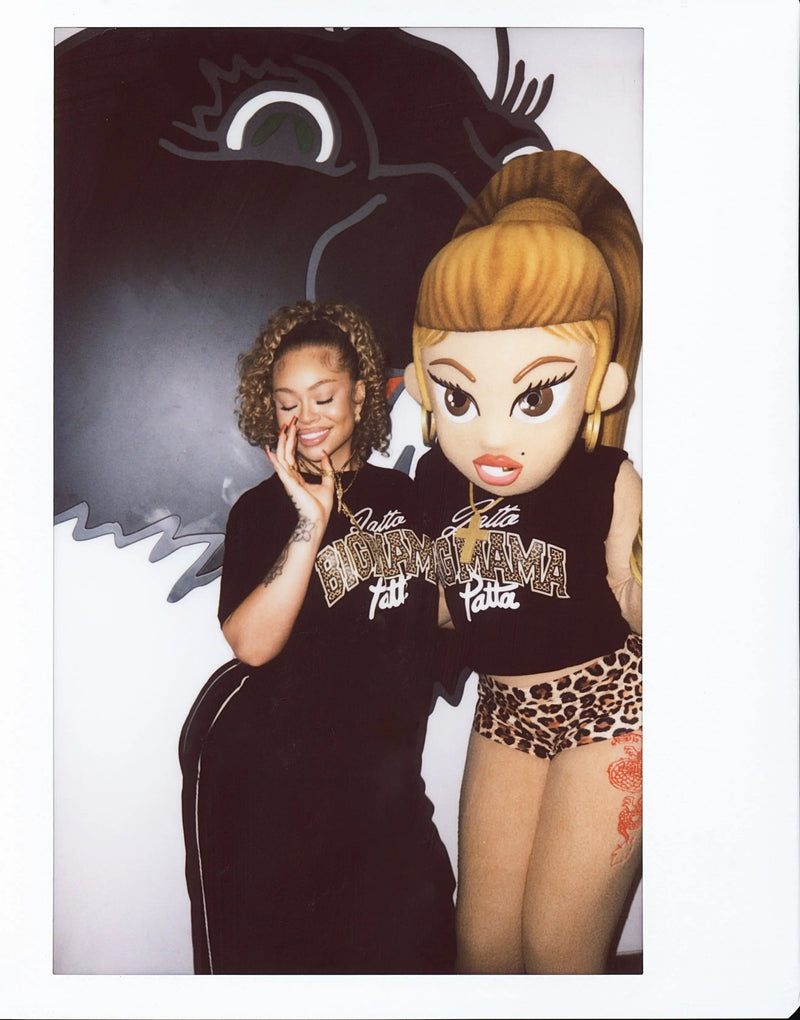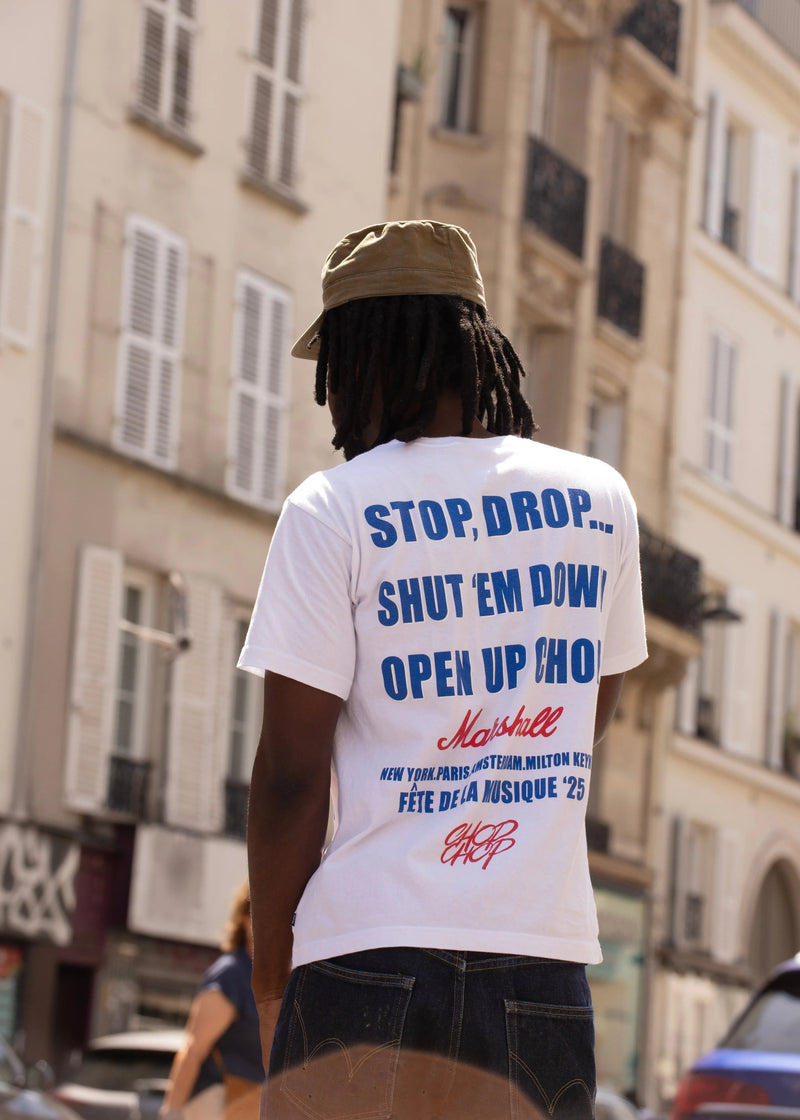Interview by Passion DzengaOn July 24th, KRUISPUNT celebrates two years of genre-bending, basement-shaking, community-building chaos with their biggest event yet at Garage Noord. What started as a one-off club night for a band has grown into one of Amsterdam’s most vital underground platforms — a collision point for punk bands, out-there electronics, and dancefloors that don’t sleep.KRUISPUNT was born out of frustration — a lack of proper band nights in a city full of talent — and built on joy, urgency, and the belief that music should bring people together across scenes, genres, and generations. Their nights are messy in the best way: part gig, part rave, part family reunion. From mosh pits to strobes, every set is a new chapter in a night that feels like it could fall apart at any moment — but never does.Now, they’re throwing their most ambitious night yet: Eight live acts. Eight DJs. Two floors. The lineup is a head-on crash of styles, from INSIDE JOB's hardcore assault and Bleedroot's heavy riffs to the deconstructed club chaos of Arda(io) and the twisted pop of My Purse. Upstairs, a cast of wild selectors — Neska, dj dj, Bootleg Sjaak, Tommy T, and more — will carry the night into full-blown delirium. It’s a celebration of what happens when scenes overlap and walls come down. A space where a hardcore band might play before a cumbia-infused DJ set. Where queer kids and old punks find common ground. Where noise meets movement and the mosh pit turns into a dancefloor. Two years in, KRUISPUNT is still doing what they do best: creating moments of joyful disorder and giving the mic to the unexpected. If you’ve ever felt like the club was too polished or the gig too exclusive — this night is for you. We spoke to Andre and Dmitri to get familiar with what it takes to start a project with such broad scope.Your project just turned two years old. What sparked its creation and what were the core ideas from the beginning?Dmitri: We actually came together originally for a different project — to make merchandise and organise a concert for my band. Through that, we realised we shared a love for bands, music, and club nights. But we also noticed a lack of proper band nights in the city, and that’s where the idea started. Andre suggested starting this project in Amsterdam, and from there it just grew organically. Andre: Exactly. At first, it was just meant to be one night for Dimmitri’s band, INBRANDERS, maybe kind of a club-tour thing. But it quickly took on a life of its own. It became clear that it wasn't just about one band or genre — it was more about a collection of different sounds and communities coming together. We didn’t want to create just a club night or just a band night — we wanted something that mixed it all up, something more chaotic and celebratory.You've been building momentum in the underground scene. What does being "underground" mean to you in 2025?Andre: It means staying curious and being present in the scene. We're constantly discovering artists who don’t yet have a platform. Being in the crowd at their first shows, talking with people, living the night with them — that’s what keeps us rooted in the underground. It’s about being in the crowd, talking to people, seeing it all firsthand.Dmitri: It’s also about building bridges. We connect people who would never usually meet — new audiences with new artists, older heads with newer acts. We love the educational part of what we do — exposing people to the range of what’s out there. We’re growing a community that’s more than just a scene. We try to educate and expose people to the wide spectrum of underground talent that exists. From hardcore bands to abstract electronics.For someone who's never been, what’s the vibe like at a KRUISPUNT event?Andre: Unlike traditional band nights that might end by midnight, our events feel like a celebration — it’s chaotic, full of energy, and lasts deep into the night. It’s not just about watching music, it’s about being part of the experience. It’s chaotic — in the best way. Our nights stretch into the late hours and early mornings. People are screaming, moshing, dancing. The energy feels like a celebration. It’s also really about just being together, smoking and talking the whole night.Dmitri: Yeah, our nights are a bit rough in the best way — people scream, dance hard, mosh. There’s this wild, unfiltered energy. It's different from passive music consumption; the audience becomes part of the performance. There’s nothing polished or passive about it. People get sweaty; they lose themselves in the moment. It’s punk in spirit, even when the music isn’t.You mix punk chaos with abstract electronics. How do you curate such a wide variety of acts?Andre: We want sounds to clash and contrast. If we already have two hardcore bands, we’ll bring in something completely different — like a cumbia band — to shift the energy. It’s about creating a night that feels like a public space where different people and sounds intersect. We want contrast. If we book a fast-paced band, we’ll follow them with something completely different — like a DJ playing riddims or ambient sounds. That clash of energy creates momentum through the night.Dmitri: Exactly. Our name translates to “Cross Point” or “Intersection.” It reflects our approach: programming diverse acts to create a dynamic flow, avoiding nights where only one genre dominates. We want people to be surprised. We want the night to move — to shift between moods and styles. That’s what makes it exciting.Would a KRUISPUNT night ever feature just bands or just DJs?Dmitri: No, that wouldn't feel right for us. We want everyone to feel included — whether they’re there for live music or to dance to a DJ. We think of our nights as complete evenings, and DJs help create an energy shift that’s crucial. The mix is essential. DJs are just as important as the live acts. They help us close out the night and build a different energy.Andre: We actually tried doing just a full DJ night once, and the vibe wasn’t the same. Our regulars didn’t show up. It made us realise how central that mix is to our identity.How do you nurture your community and maintain those connections between events? Andre: We’re at all the shows, always talking to people. We’re not some distant curators. The events are cheap and accessible, and we treat everyone like part of the same family. We're just... around and involved. We’ve built relationships. It doesn’t feel transactional. It feels like we’re all part of it.Dmitri: We’re hosting a dinner for our second anniversary — cooking ourselves, inviting friends who helped build this community and anyone who would like to join. We’ve done bigger ones before, inviting every artist that’s ever played. It created an amazing energy and reminded us of the power of inclusivity. It creates such an amazing atmosphere before the event even starts.That dinner sounds amazing. What's on the menu and where’s it happening?Dmitri: Nothing fancy — mushroom noodles. But it’s about togetherness, not the food. We’re cooking it at home, then hosting the dinner at the venue, on the terrace before the event.Andre: We’ve seen how a shared meal sets a tone for the night. It creates a different kind of energy — one that feels like family.Is there a political or emotional thread that ties your community and events together?Dmitri: Many of the people who attend are active — politically or socially. The space we provide isn’t explicitly activist, but it’s a platform where people meet, talk, and share values. It's a different kind of activism — less protest, more community. Not explicitly — we don’t brand ourselves that way. But a lot of people in the crowd are politically active or involved in different communities. It’s a space where values are shared, even if it’s not the focal point.Andre: Most of our artists have strong stances, and that shows in their performances. The emotions and politics are there, even if we don’t frame the night that way. Conversations happen, connections spark — and often, something new is born from these nights. We don’t always set out to make political statements, but we invite artists who have something to say — emotionally or politically. The politics are also in the connections people make. Conversations happen, ideas form. It’s a softer, community-based kind of politics.So even though you’re not labeling the events as political, they’re still spaces for organising and connection?Andre: Exactly. We've heard from people that projects and ideas were born during our nights. When you put like-minded people together in a space for hours, good things naturally come out of it. We’ve had people start projects after meeting at one of our nights. It’s a place where people from different worlds collide, and sometimes those collisions spark something new.Dmitri: Yeah. It’s a different kind of political — one rooted in joy, togetherness, and shared experience. Sharing space, building community, breaking genres, breaking norms — all of that is radical in its own way.What was the loudest set you've ever heard at KRUISPUNT?Dmitri: For me, definitely Key/Gen. Not even decibels here. I mean pure noise — distortion and chaotic energyAndre: Yeah, Key/Gen was just wild. I’d say Arda(io). Even though it's also electronic, I didn’t know what to expect, and it totally threw me around the room. Like, full-body experience.Dmitri: He just loves noise. It’s crazy — the grooves, the sound design... it’s rough but incredibly detailed. Really sick stuff.Can you describe what your first party was like?Andre: Yeah, if we count that first gathering at Café40. That’s where it really started. We were supposed to launch a publication, but the printing failed. So we just launched our Instagram and invited a bunch of friends... plus people we didn’t even know showed up. We had some rock 'n' roll DJs and realised — wow, people really need this kind of space. It wasn’t even heavily promoted, but the room filled up.Dmitri: It felt like a birthday party, honestly. That kind of joy. That moment confirmed something for us — we could bring people together. And that was enough reason to keep going.So just opening your doors showed you there was a demand. Were you imagining you’d still be doing this two years later?Andre: No way. But it kind of snowballed. After our first night at Garage, Tommy from Pacific invited us to program at a bigger event. Then more opportunities kept coming. It really never stopped. Now we work on almost everything together.Dmitri: Tommy’s been a huge inspiration. He gave bands space at club nights way before we did. He booked my band INBRANDERS back in 2018. That was a real “first time seeing it’s possible” kind of moment.Same here — he was the first person to book me at Garage Noord. Shout out to Tommy and Pacific Ondergounds! So you’re about to hit two years. Have any rituals emerged? Anything you see repeating at every party?Dmitri: Honestly, our ritual is just running all night. Artist management, troubleshooting, making sure people show up — it’s go, go, go. There’s also this one moment each night — you can feel the crowd click into place, like, “OK, now it’s happening.”Andre: But once the last band finishes around 1:30 or 2AM, that’s when I finally let go and just party. That’s my personal ritual. Yeah, it's usually after the first band. Everyone’s warmed up, and suddenly it feels like we’re all moving in sync. That moment — that shared energy — is kind of sacred.With live acts, there’s so much more coordination than a DJ night. It’s real production work.Andre: Exactly. Monitors, backlines, gear changes — it’s intense, but that chaos is what makes it fun.Let’s talk about your anniversary lineup. How did you approach curating it?Andre: Initially, we wanted a pure rock ‘n’ roll night — kind of nostalgic. But then we thought, nah, let’s keep it versatile. Downstairs is bands and rock-centric DJs. Upstairs is fully electronic. It’s actually our most versatile night ever.Dmitri: We’re part of a Garage box (funded project for “newer” Amsterdam-based projects, also with Fuuture Jazz and b3tter:irl) program now, which gives us a better budget. So we thought — why not open both floors?Andre: Upstairs is almost exclusively our friends, too. That was intentional — for year two, we wanted returning artists, but also fresh faces. It’s our biggest lineup yet: eight live acts and eight DJs, if I count myself.Dmitri: I’m most excited for Arda(io) again — that set will be chaos in the best way. Also, Inside Job, a proper hardcore band. First time we’re doing a self-titled hardcore band like that.Andre: And Grote Geelstaart— they’re experimental, wear suits, and just go off. I think they're from the conservatorium, but I’m not even sure. They’re just... amazing.Two years deep — what’s next for you?Dmitri: Staying rooted in Amsterdam is key. This city needs spaces like this. But we also want to expand — Utrecht, Rotterdam, The Hague where Andre is already working on projects but even abroad. But never at the expense of the home base.Andre: We’d love to host a stage at a festival — to really push ourselves, start early, end late, and see what we can do across an entire day.Dmitri: Production-wise, that’d be a huge learning curve. But we’re ready for it. Every night teaches us something.Andre: Also, still dreaming about doing a publication. Maybe digital, maybe annual print. It’ll happen — just need the time.Any final thoughts before we wrap this up and start preparations for tomorrow?Andre: Just that we care deeply about representation. We want young girls, queer kids, everyone — to see themselves on stage. That’s what punk is. You don’t need to be great to start a band. You just need to start.Dmitri: Exactly. If people leave our events feeling inspired, then we’ve done our job. The ones on the dancefloor today should be the ones on stage tomorrow.Andre: And we’re always open to hearing from people. Whether it’s an act, a band, or someone wanting to get involved — reach out. We’re listening.From one-off night to a full-blown underground force, KRUISPUNT has become the intersection where bands thrash, DJs explode, and new scenes are born on the dancefloor. It’s a movement built on joy, urgency, and radical togetherness. KRUISPUNT are the embodiment of what makes DIY culture so powerful. It’s a cycle of inspiration. You try something, someone sees you do it — and suddenly, they believe they can too. They are hosting their 2-year anniversary on July 24th at Garage Noord and tickets are available now. If you’ve ever felt like the club was too clean or the gig too closed-off — this night is for you. Come lose your voice, find your people, and become part of something that keeps growing from the ground up.
